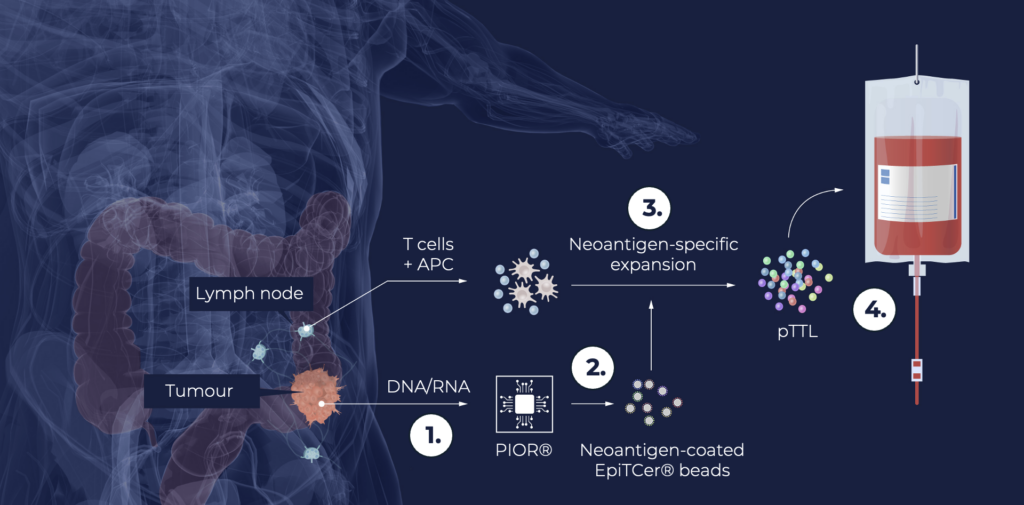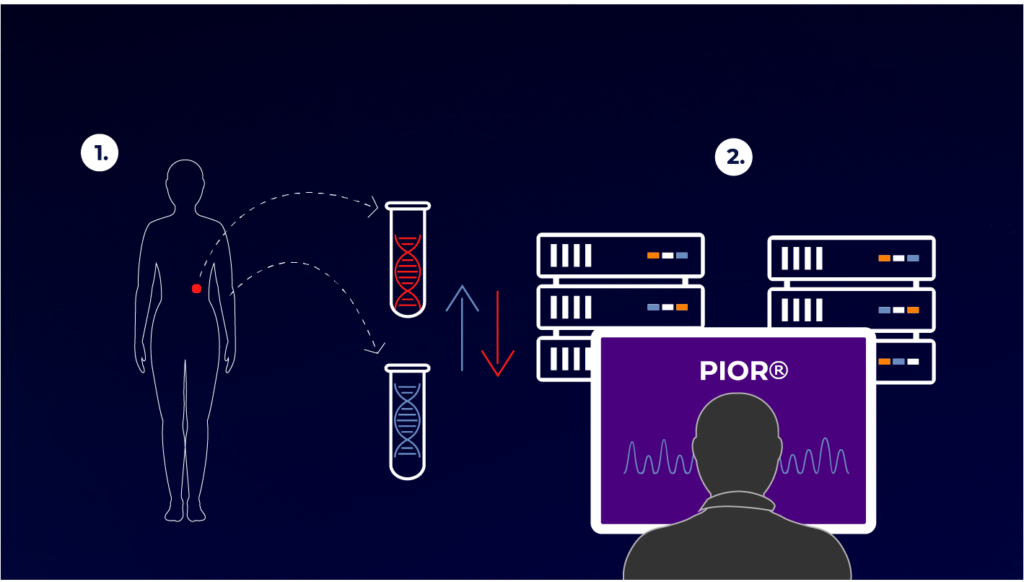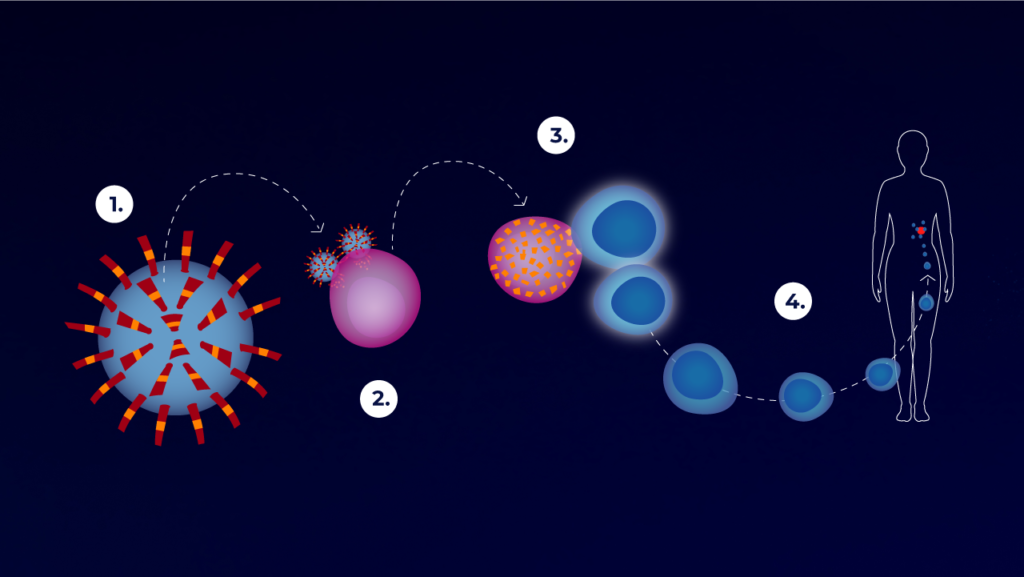Our technology
Our pharmaceutical product, pTTL (Personalised Tumour Trained Lymphocytes), offers a unique personalised cell therapy designed to target and eliminate cancer with comparably mild side effects. Currently, pTTL is being evaluated in a Phase I/II clinical trial.
Our tools include two proprietary technologies: PIOR® and EpiTCer®. These tools excel in identifying the most effective neoantigens to activate and amplify T lymphocytes (also known as T cells) to eradicate the cancer.
pTTL: Personalised cancer therapy explained
The patient’s tumour is compared to healthy tissue from the patient, using DNA and RNA sequencing (1). Then the PIOR® system is used to identify optimal neoantigens to target and personalised EpiTCer® beads are manufactured (2). The patient’s own antigen-presenting cells (APCs) and T cells are derived from the tumour-draining lymph nodes and are mixed with the EpiTCer® beads, leading to expansion of tumour-targeting T cells (3). After a 2-week expansion period, pTTL is ready for administration back into the patient via infusion (4).

Discover the science behind our pTTL cell therapy in this video.
Internalisation of antigens with the EpiTCer® technology promotes natural processing and presentation of peptides to T cells.

Unique proprietary tools
Explore the specifics of our two innovative technologies, PIOR® and EpiTCer®, forming the basis of our pTTL therapy. Designed with precision and efficiency in mind, they offer cutting-edge solutions in neoantigen identification and delivery.
PIOR®: Precision in neoantigen identification
Treating cancer poses a complex challenge due to the varied mutations and the resulting neoantigens present in each tumour. For therapy to be effective, it is crucial to target the most relevant mutations. PIOR® streamlines this process by identifying, selecting, and prioritising tumour-specific neoantigens for inclusion in personalised T cell therapy. The system, built on state-of-the-art machine learning, captures the latest in neoantigen prediction and next-generation sequencing. It is not only efficient and accurate but also GDPR-compliant, ensuring alignment with industry quality standards.
To select tumour-specific neoantigens, PIOR® uses state-of-the-art bioinformatic techniques to compare DNA and RNA sequences from tumour cells to those from healthy cells to pinpoint tumour-specific mutations, known as neoantigens (1). PIOR® then employs advanced algorithms and machine learning to conduct a comprehensive analysis of these mutations. It identifies up to 36 of the most optimal tumour-specific neoantigens for each patient, which are then used in the production of personalised EpiTCer® beads (2).

PIOR® in focus: Q&A with the Product Owner
Hear from the product owner how our PIOR® system stands at the forefront of neoantigen identification.
EpiTCer® technology: Carrying the neoantigens
Neogap’s EpiTCer® technology expands and trains the patient’s T cells to target the specific neoantigens derived from the patient’s tumour. Once these neoantigens are identified through our PIOR® system, they are produced and paired with superparamagnetic microbeads, forming patient-specific EpiTCer® beads (1).
Due to their optimal size, EpiTCer® beads are readily taken up by APCs like macrophages or dendritic cells through the process of phagocytosis, essentially ’cell-eating’ (2).
These APCs perceive the antigens attached to the beads as foreign, processing and then displaying the neoantigen peptides on their surfaces. They present the antigens to the patient’s T cells, essentially instructing them on which neoantigens to seek out. As a result, these T cells get activated and multiply (3). After expansion of the cell population, the T cells are formulated and infused into the patient, launching an attack against the tumour (4).

